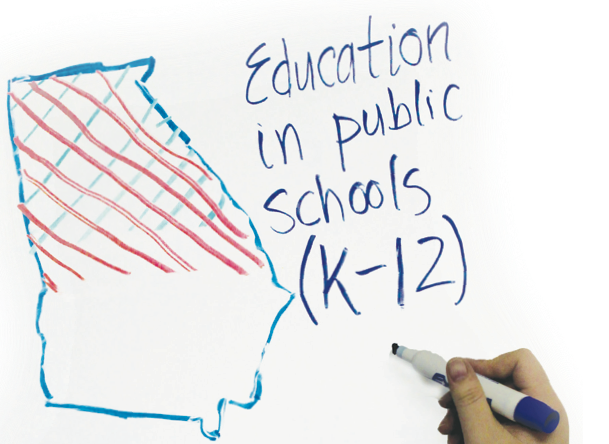
Since 2009, more than 41 percent of Georgia’s school districts have eliminated art and music programs, and 62 percent of them have eliminated elective courses, according to the Georgia Budget and Policy Institute. This is being done to combat the lack of funding for education programs and teachers, but it creates an entirely different problem for the people who need help the most: the students.
Although school systems exercise the right to fund the courses they feel are most necessary for education, they are overlooking the fact that art classes are just as necessary as math and science courses.
Artists are the black sheep of the educational world, and artistry in itself is a constantly overlooked skill. It’s even recommended that students don’t study art in college, a true testament to the stigma that art is penniless profession. That same quiet, student carrying a canvas around campus with no classroom curriculum to promote artistic growth could be the Van Gough of our generation. We’ll never know if there’s no forum for artistic learning.
There are several benefits for students who have the opportunity to take these courses.
First and foremost, art classes stimulate creativity and emotional expression, as well as help students to develop critical thinking skills. Art classes are taught solely on the premise that “there is no ‘right’ answer.” Although there may be a specific lesson plan provided by the teacher, every student creates something that shows his or her own individual interpretation of what the assignment’s goal was.
This not only strengthens communication skills but also gives students practice with creative prob- lem solving. Both skills translate enormously in a professional work environment, as there is always a need for someone who can “think outside of the box” to solve a particularly difficult problem and then communicate how they did so.
Even more beneficial than the growth art cre- ates in the individual is the increased cohesiveness between individuals. Art classes improve the senses of perception and awareness. As students are ex- posed to more unique forms of art and creativity, their minds stretch to facilitate new understandings of the world and personal identities.
It is easier to understand different cultures through art forms like music and film than it is to talk to someone that they may not speak the same language. Art is a universal language that makes the speaker become more conscious to whom they’re talking and makes the listener more aware of who is speaking.
More importantly, art classes help students to discover creative talents that they otherwise wouldn’t have known they had. This allows stu- dents to create their own jobs geared toward natu- ral strengths rather than merely doing something because they think it will pay well.
School systems are marginalizing an entire generation of potential innovators by cutting off their creative resources. The next Steve Jobs could be sitting in a history class, completely unaware of his creative genius because his elective computer applications class was cut.
Artists design every possible thing that can be thought of, from the phone in your hands to the chair you’re sitting in. It takes a creative mind to make a funny ad, develop a groundbreaking busi- ness plan or design a unique marketing strategy. Artists need classes to stimulate and strengthen creativity just as mathematicians need classes to improve their skills.
